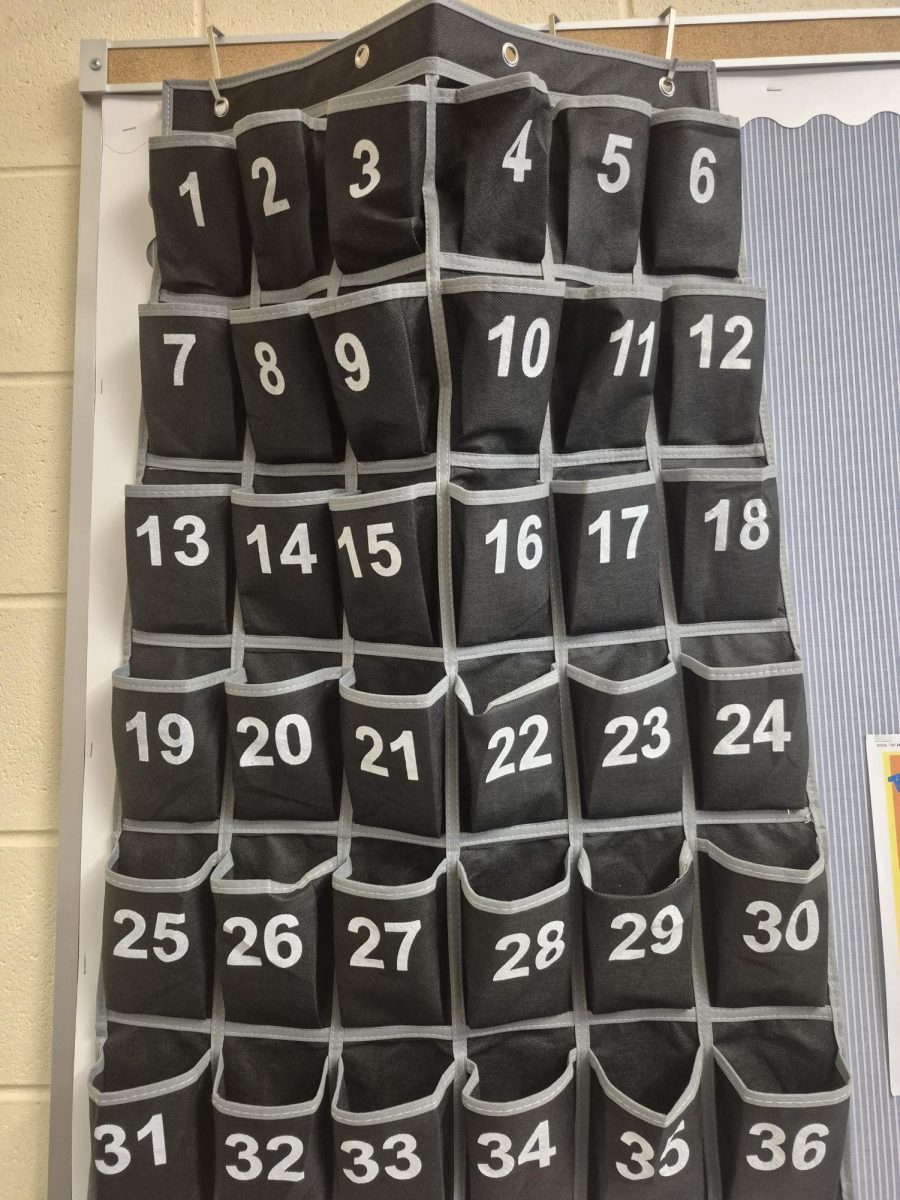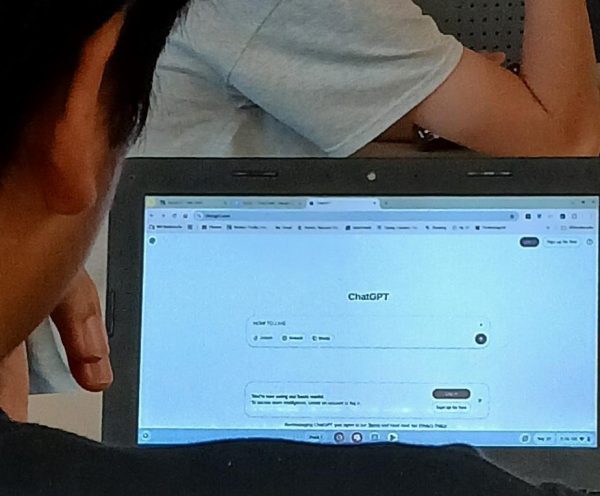At the end of a class at West Ottawa High School last year, most students might have lined up at the door, waiting for the bell to ring, looking at their phones with their heads down. However, this year, West Ottawa High School has introduced the schoolwide policy of keeping phones in a caddy, typically a blue or black contraption designed to hold calculators, that hangs on the wall of each classroom. Students sometimes find this new policy annoying or inconvenient, but phone restrictions at WOHS are not new. Instructor Josie Cheney said that the high school introduced the “bell-to-bell no cell” rule about five years ago. Still, Cheney said there was an issue with “variation between teachers” and a “lack of consistency” in how teachers enforced this policy. This year, the School Improvement Team (SIT) made phone restrictions a standardized rule. Instructor Eric Wilkinson, an SIT member, said that “more teachers bought into the idea of phones being disruptive to learning last year,” which motivated SIT to implement the current policy.
The phone caddies have positive effects on students’ focus, while being more moderate than other options. “I have noticed that students are dramatically more engaged and present in the classroom,” Cheney said. Similarly, Wilkinson noted that “I haven’t seen a phone out in class this year, whereas last year I had to remind someone every hour.” Studies have scientifically proven the connection between phones and distraction; a study by the University of Southern Maine shows that for demanding tasks, “the mere presence of a phone is sufficiently distracting to affect cognitive functioning” (Thornton et al. 485). Having phones in caddies increases the physical space between students and their phones, making them more able to learn and problem-solve with difficult tasks.
While students sometimes find this policy annoying, they also appreciate it. The policy is more moderate and flexible than some other options. Jr. Madeleine Babbitt mentioned how she appreciates that phones are still allowed, but put away, saying, “I feel like it actually makes a difference. I like this better than what I see other schools doing.” Some other schools require phones to be put in locked pouches, but West Ottawa does not use these, meaning phones are still available in the event of an emergency. Additionally, the policy does not supersede teacher authority; students can still use phones for educational purposes and during free time if a teacher allows it.
Because the policy still depends on individual teachers to enforce the rule, it is limited. Some teachers are content if phones are in backpacks, even if they are not in a phone caddy. However, having the policy in place makes these certain classes the exception, not the rule. Babbitt said that even in more lenient classes, the policy makes a difference. Wilkinson mentioned a lack of incentive for students to check notifications, since they know other students’ phones are in caddies too–an advantage that is distinct to the schoolwide rule. While enforcing the rule is still up to teachers, the schoolwide policy sets an expectation for students that is easier for teachers to enforce.
There has been a rising trend to enforce phone restrictions by state law rather than by school rules. According to Education Week, since 2023, four states have passed laws that require specific school phone restrictions, while 27 states recommend policies that restrict them. This summer, the Michigan House of Representatives introduced but did not pass legislation standardizing phone restrictions. Generally, students are not in favor of statewide phone bans, but teachers are more divided. While Cheney mentioned her support for the recent Michigan legislation, Wilkinson didn’t feel it was necessary to have a statewide ban.
Both Cheney and Wilkinson believe the phone caddy policy will continue. Cheney said, “I believe that it will continue unless a stricter policy were to take its place, such as West Ottawa High School becoming a phone-free school or the state laws change.” Given staff members’ strong support for the policy and students’ acceptance of it this year, the phone caddies are here to stay–helping students learn and teachers teach.








